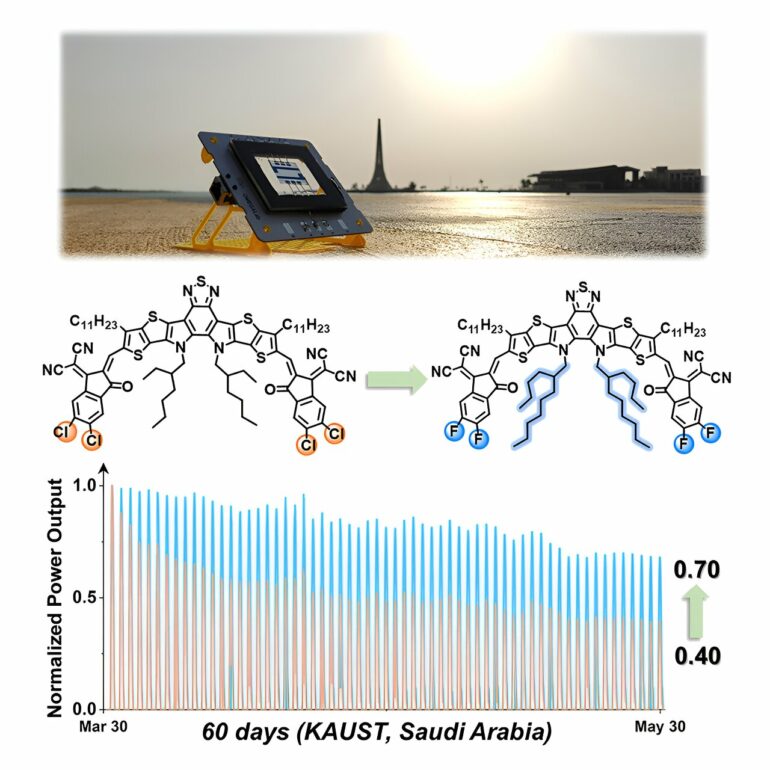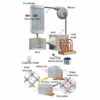The molecular structure of organic semiconductors is key to the outdoor stability of organic solar cells. Molecular-level insight into one family of organic solar cell materials, known as Y-series nonfullerene acceptors (Y-NFAs), could help enhance their outdoor stability.
This discovery by a KAUST-led team, published in Joule, is expected to lead to many applications ranging from building-integrated photovoltaic windows to net-zero greenhouses.
Lightweight, flexible, quasi-transparent and amenable to large-scale manufacturing, organic solar cells have taken center stage in renewable energy research. Efforts to boost power conversion efficiencies have led researchers to introduce Y-NFAs in the active layer of these devices, breaking new ground for high-efficiency solar cells.
Y-NFAs have broad absorption spectra, tunable energy levels and excellent charge transport properties, making them ideal components for organic photovoltaics, explains Han Xu, a Ph.D. student in Derya Baran’s group.
The research team has now produced devices with record efficiencies of 19%, but the relationship between their molecular structure and stability is unclear. Steady performance of Y-NFA-based solar cells under real-world operating conditions also remains elusive, hindering the commercialization of these devices.
Stability, as important as efficiency, is critical when evaluating solar cells. Device lifetime hinges on factors such as ambient moisture and oxygen, light exposure and heat, and “outdoor evaluation, compared to lab-scale stability assessments, is the closest way to assess the real-world performance of a solar cell,” Xu says.
Baran, Xu and coworkers evaluated the outdoor stability of various Y-NFA-based solar cells under extreme hot Saudi climatic conditions to understand the structure–stability relationship of these devices and guide the design of small molecules that would yield high-performance devices with enhanced stability.
To prevent moisture and oxygen from diffusing into the devices and counteract their effects, they wrapped the devices in thermoplastic polyurethane and measured the performance using outdoor sunlight as light source.
“Our tests revealed that organic solar cells operating outdoors presented minor performance changes at 65°C and the overall stability of the solar cells is connected to their photostability,” Xu says. This suggests that light is the main factor governing the outdoor lifetime of the devices. “Improving the photostability of active layer materials is crucial for enhancing the outdoor lifetime of solar cells.”
The researchers found a link between the molecular structure and outdoor stability of Y-NFAs. They discovered that fluorine-bearing functional end groups and long hydrocarbon side-chains within Y-NFA molecules enhanced outdoor stability and protected them against photodegradation, which is crucial for preserving the efficiency and longevity of Y-NFA solar cells in outdoor settings.
The researchers are planning international collaborations to conduct outdoor stability testing on different devices in various environments. They are also working toward making market-ready devices. “The fabrication of large-area devices is indispensable for commercialization, which calls for the integration of multiple technologies,” Xu says.
More information:
Han Xu et al, Dissecting the structure-stability relationship of Y-series electron acceptors for real-world solar cell applications, Joule (2023). DOI: 10.1016/j.joule.2023.07.003
Provided by
King Abdullah University of Science and Technology
Citation:
Seeking stability to support sustainable outdoor solar cells (2023, November 6)



